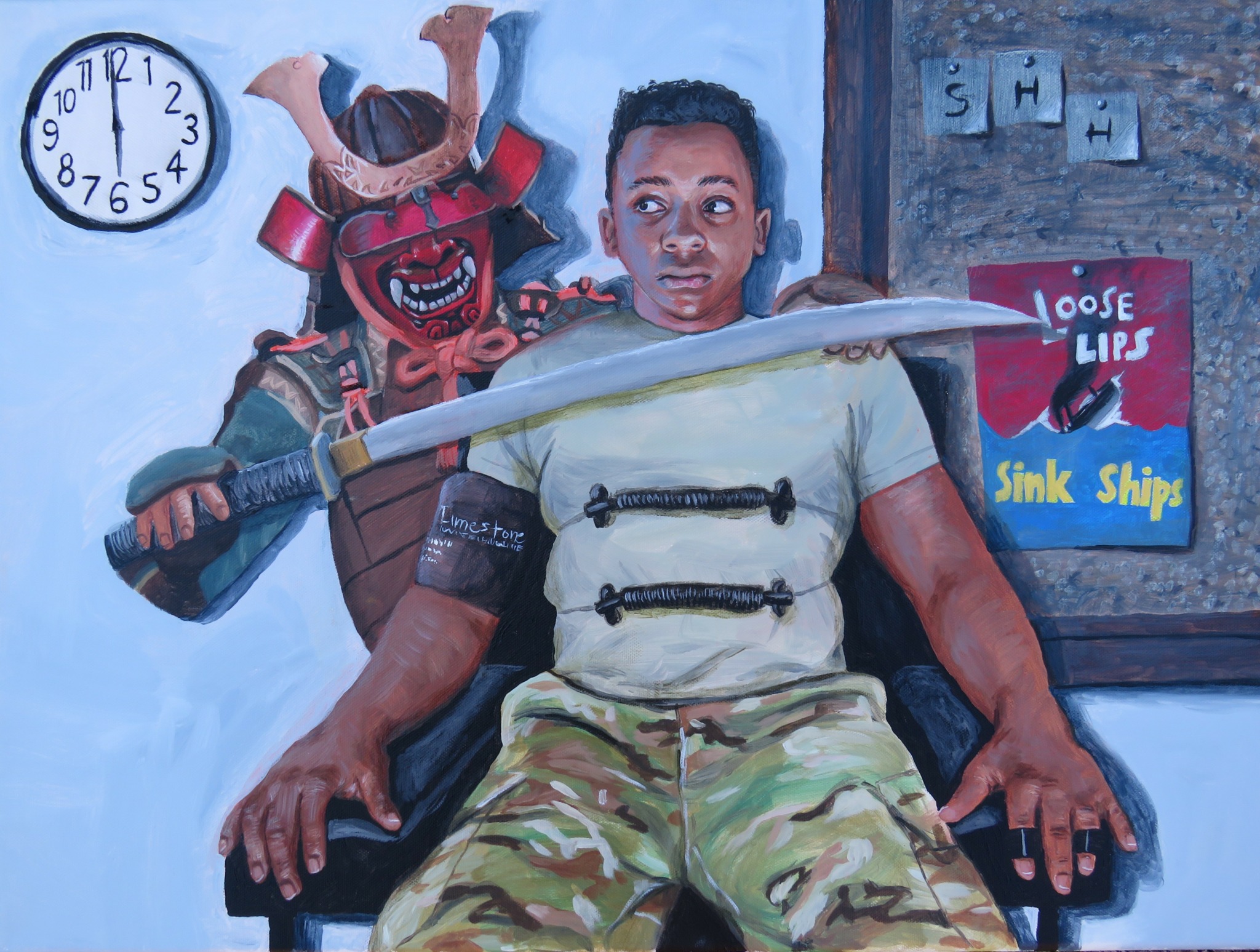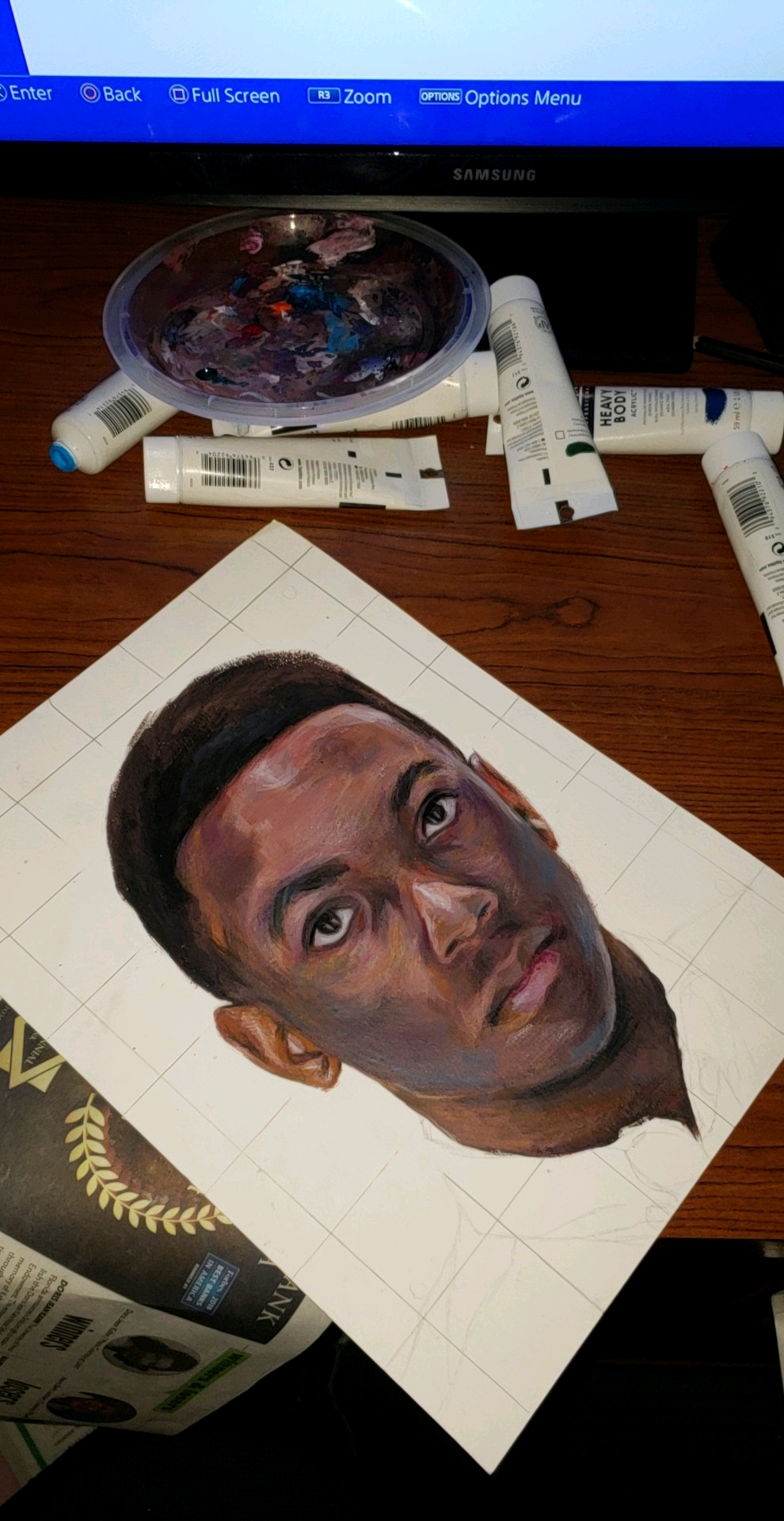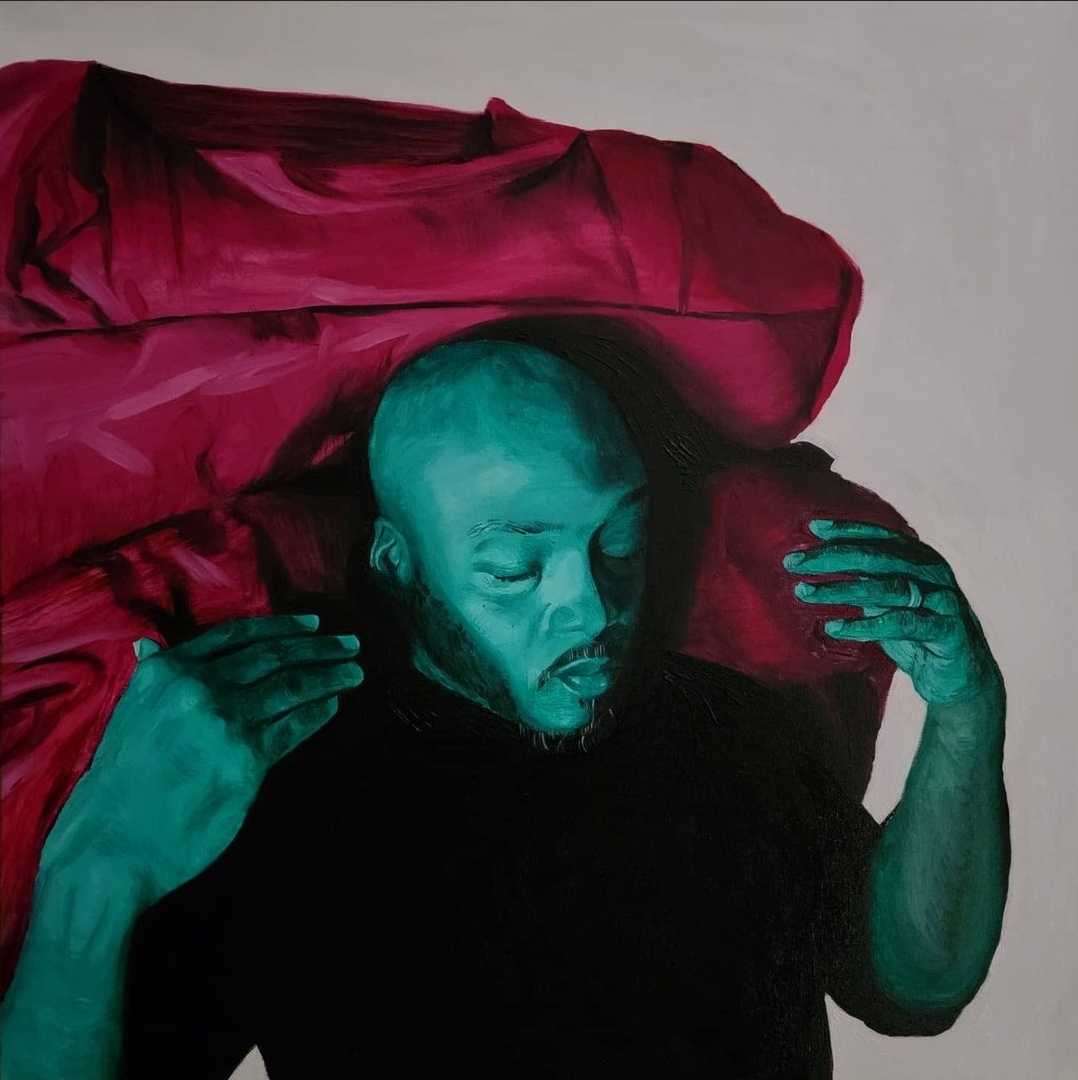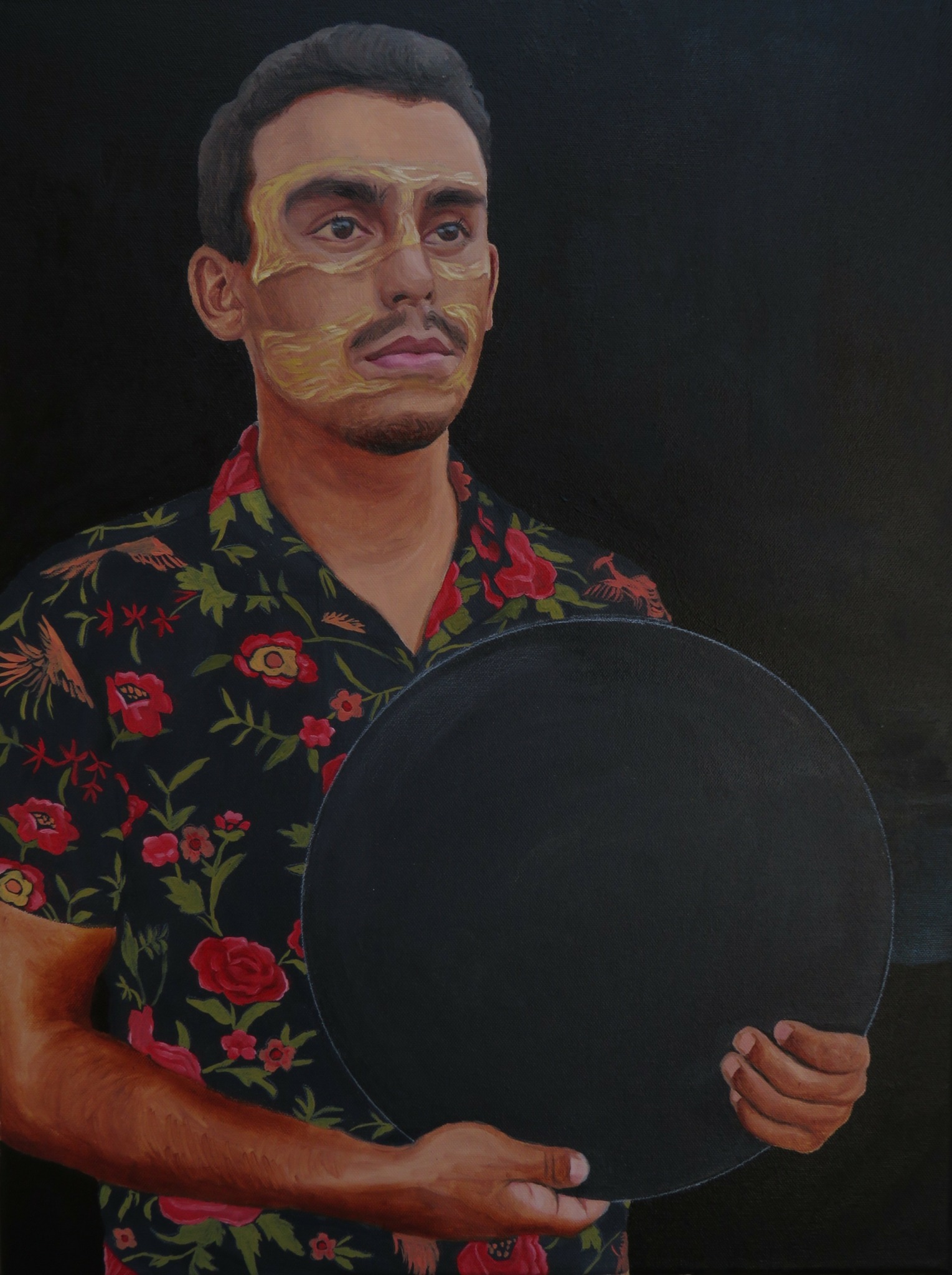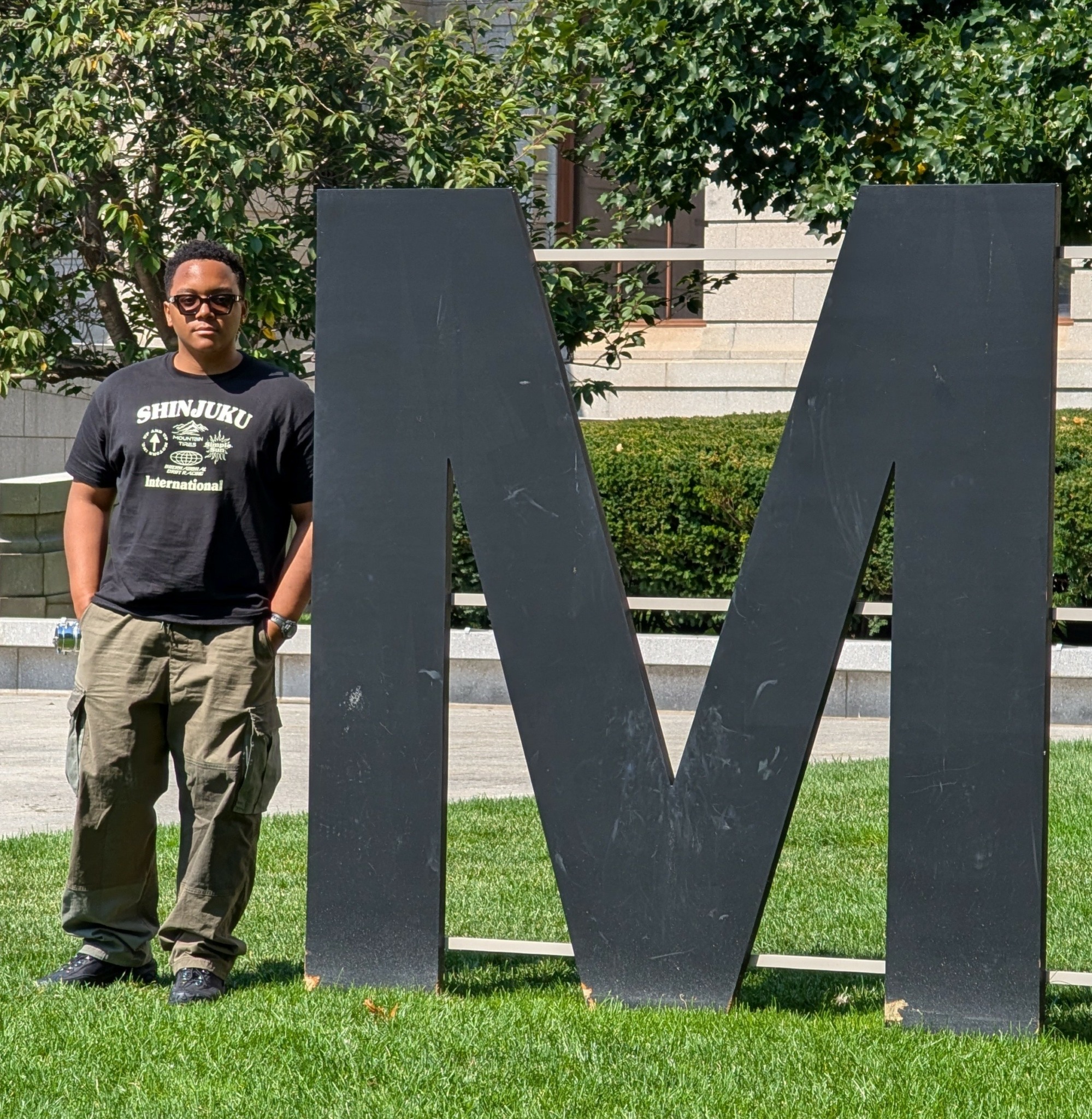Today we’d like to introduce you to Rodrick Howard
Hi Rodrick, we’re thrilled to have a chance to learn your story today. So, before we get into specifics, maybe you can briefly walk us through how you got to where you are today?
My journey as an artist started rather early in life.
In grade school, I perpetually carried my sketchbook in my hand, and would draw things throughout the day. I began taking art more seriously when I reached high school. In my ninth grade year, I was initially a marching band kid, but afterwards, I decided to focus more on visual art. My great high school art teacher, Mrs. Bass, really challenged me in the multiple Advanced Placement art classes offered, like AP Drawing and 2-D Art and Design. In tenth grade, Mrs. Bass helped me enter my artwork into the Scholastic Art & Writing Awards and I won a few Silver Key awards. My art was then shown at the Brooks Museum of Art in Memphis, Tennessee. Seeing my art in a museum setting really awakened something within me. I knew I wanted to continue to create and share my work.
After graduating high school, I enlisted in the Army as a Cyber Operations Specialist and served for about three years. I considered attending college locally in Mississippi, but deep down, I wasn’t excited about my options. I knew I could earn a scholarship through serving in the military that would allow me to enroll at a greater selection of schools across the world.
Being in the Army was a galvanizing experience. Some of the most exciting moments in my life were when I was in training in Pensacola, Florida. The base, called Corry Station, was a setting for joint training, so I got to take classes with members of other branches like the Navy, Air Force, and Marines. Being a Cyber Operations Specialist also exposed me to a top secret, clandestine world that I had never known before. I continued to create artwork during this time, but the work was generally much smaller than some of the paintings I make now.
After leaving the service during the COVID-19 pandemic, I decided to start my college applications. When I first left the Army, I wanted to become a medical illustrator, as that occupation would allow me to pursue my interests in biology while also applying my art skills. Augusta University, a school right outside the base where I was last stationed, had a program for medical illustrators, so I thought it would be a great way to stay near my friends on the base while completing college. After talking to friends and family, I was advised to cast a wider net. I eventually started applying to schools like Stanford, UC Berkeley, Brown, and Harvard.
Ultimately, I received admission to Harvard University, where I’m now completing my Bachelor of Arts degree in Art, Film, and Visual Studies with a Secondary in Computer Science. I’m working on my Senior Thesis project, called “Floating World”, which is inspired by my experiences in the military and the transition that followed.
Can you talk to us a bit about the challenges and lessons you’ve learned along the way. Looking back would you say it’s been easy or smooth in retrospect?
My path has been rough at times. I’ve definitely struggled with things like depression and anxiety, especially in the elite school pressure cooker environment and the strict military. Luckily, I’ve had a great support system in friends, family, and college faculty. I’m incredibly grateful for how things have panned out and I’m very excited for what the future holds.
Thanks for sharing that. So, maybe next you can tell us a bit more about your work?
I focus on creating provocative artwork that explores unexpected connections between seemingly disparate subjects. My current specialty is oil painting. My work is known for combining historical and cultural narratives together to create multi-layered meanings, as exemplified in multiple bodies of work, like my current Senior Thesis and my “Mythos” series where I drew parallels between mythology and modern suburban life.
I’m most proud of my current thesis series, “Floating World”, which draws from my personal experience as a veteran to explore the fascinating parallels between American military culture and feudal Japanese society. This work sets me apart through its display of my unique perspective on class mobility and warrior culture across different eras and societies. By combining my background with academic insights gained at Harvard, I create work that challenges viewers to question their assumptions and see familiar subjects in new ways, similar to the pedagogy used by my favorite professors in college.
My artistic practice is particularly distinguished by its examination of racial and societal dynamics through past and contemporary lenses. This is shown in my “Surveillance” series, which traced the evolution of surveillance from 18th-century “lantern laws” to the modern-day surveillance apparatus. With my cybersecurity background, I have a unique perspective to impart about the evolution of technology and the ethical implications that entails.
Where do you see things going in the next 5-10 years?
As an oil painter, I see several significant transformations on the horizon for artists over the next decade. I’ve noticed that digital art and even AI-generated imagery have had a rising influence on the art world, with auction houses like Sotheby’s engaging with work made using AI algorithms. After having taken a computer science course on coding and art, I think I’ll likely create code-based art, as well.
The contemporary art market also seems to be experiencing a sort of democratization through online platforms and social media. Traditional galleries definitely remain important, but artists now have unprecedented opportunities to reach and market to collectors directly through digital channels like Instagram. This is a creating a more diverse marketplace where myriad artists using various styles can find an audience. However, I believe this shift is also saturating the space to some extent, challenging artists to become more business-savvy and targeted with their digital presence.
I recently took a course on the history of tattooing in cultures across the world. To my surprise, learning about tattooists expanded my art historical knowledge greatly. Seeing the evolution and renaissance of tattoos in places like Los Angeles and the trailblazers like Sailor Jerry and Don Ed Hardy who helped redefine Americana work really affected how I view more traditional forms of art like oil painting and sculpture. Ultimately, like tattooing, I think art as a whole will just continue to undergo more hybridization in the coming years.
Pricing:
- Prices for original works can be found on my website: rodpaints.com
Contact Info:
- Website: https://www.rodpaints.com/
- Instagram: https://www.instagram.com/rodrickpaints/
- Twitter: https://x.com/rodpaints



